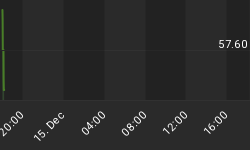I've written before about the dramatic rise in fixed income rates that face investors in the very near future due to the funding issues associated with our entitlement programs coupled with the incalculable measures taken by the government in the past few weeks to stem the credit crisis. Those efforts ensure the amount of Treasury issuance will explode.
One of the major ramifications of having our national debt move above the $10 trillion mark is that the sustainability of the government, consumer spending and the economy rests on the continuation of artificially low interest rates. In fact, low rates that are the result of money printing have become our addiction.
In last week's commentary I pointed out that it now takes about 10 cents on every tax dollar collected just to pay the interest on the debt. As bad as that is, it is only because interest rates are at record lows that the debt service is still manageable.
The yield on the 10 year note as of this writing is 4.01 %. To illustrate how low that yield is in historical terms, the average constant yield on the ten year treasury going back 46 years is 7.04%. Keep in mind that this historically low yield exists at the same time consumer price inflation has increased by 5.4% over the last 12 months. Why are real yields negative while debt levels are soaring and the monetary base is growing at a 114% annual rate (you read that correctly -- 114% annualized in recent weeks)? Part of the answer has to do with investors' mistrust of holding debt that is not backed by the government. But to get to the main reason why rates are so low you have to understand how the Fed Funds rate is set. When the Fed wants interest rates to fall, it prints money and purchases Treasuries as well as other bank assets. Printing money, however, increases its supply and is the definition of inflation.
Can you see the conundrum? The Fed needs to constantly print money and expand the money supply in order to keep their target rate from rising. However, printing money is inflationary and demands that yields rise in order to provide a positive return for fixed income investors. The more they print the less the Federal Funds Rate will rise. And rates, especially on the short end of the yield curve, will most likely stay low -- the Fed can only control the target rate for intra-bank lending, but free market short- and long-term rates also tend to be influenced by the central bank's target rate. Yet the further out on the yield curve you move, the more highly influenced rates are by inflation. It is important to stress that short-term rates have become much more important in recent years as banks and the government have increased the use of short term financing to fund their operations.
The bottom line is this: debts at the public and private levels have risen to the point that in order to insure against default, interest rates must remain at an unnaturally low and negative real level. In order to achieve that artificial level, the Federal Reserve must continually inflate the money supply. How high would the overnight rate be if not for government operations? Well, one of the consequences of the credit crisis is that banks mistrust each other's assets and are reluctant to lend to one another. If market forces were allowed to operate, intra-bank lending rates would soar just as they did several weeks ago when the Effective Federal Funds rate hit 6%! Clearly the free market rate bears little resemblance to today's Fed Funds target rate of 1.5%.
However, inflation and low interest rates cannot coexist indefinitely. One will have to give way to the other. It is my view that government efforts to keep yields low across the curve will fail. At some point, the yield curve will start to move sharply higher as short term rates remain relatively low and long term rates soar in response to inflation. It is at that juncture that market forces will prevail and send the economy into the greatly needed recession (or worse) that until this point was held in abeyance by our government. We can only hope this process happens sooner rather than later, as the longer it takes to occur the more severe the economic suffering will be.
*Our Chip Hanlon did a great interview this week with Ed Pinto, Fannie Mae's first Chief Credit Officer in the 1980's. Talk about insights into what caused this mess! Check it out here.
















